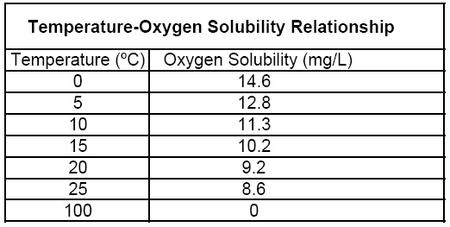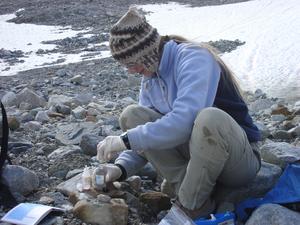The Winkler Method - Measuring Dissolved Oxygen
What is the Winkler Method?
The Winkler Method is a technique used to measure dissolved oxygen in freshwater systems. Dissolved oxygen is used as an indicator of the health of a water body, where higher dissolved oxygen concentrations are correlated with high productivity and little pollution. This test is performed on-site, as delays between sample collection and testing may result in an alteration in oxygen content.
How does the Winkler Method Work?
The Winkler Method uses titration to determine dissolved oxygen in the water sample. A sample bottle is filled completely with water (no air is left to skew the results). The dissolved oxygen in the sample is then "fixed" by adding a series of reagents that form an acid compound that is then titrated with a neutralizing compound that results in a color change. The point of color change is called the "endpoint," which coincides with the dissolved oxygen concentration in the sample. Dissolved oxygen analysis is best done in the field, as the sample will be less altered by atmospheric equilibration.
Applications
Dissolved oxygen analysis can be used to determine:
- the health or cleanliness of a lake or stream,
- the amount and type of biomass a freshwater system can support,
- the amount of decomposition occurring in the lake or stream.
How to- Sample Collection, Preparation, Analytical Protocols, and Concerns
Dissolved oxygen should be measured as quickly and carefully as possible. Ideally, samples should be measured in the field immediately after collection. The following protocol is adapted from
Reagent List:
- 2ml Manganese sulfate
- 2ml alkali-iodide-azide
- 2ml concentrated sulfuric acid
- 2ml starch solution
- Sodium thiosulfate
Procedure:
- Carefully fill a 300-mL glass Biological Oxygen Demand (BOD) stoppered bottle brim-full with sample water.
- Immediately add 2mL of manganese sulfate to the collection bottle by inserting the calibrated pipette just below the surface of the liquid. (If the reagent is added above the sample surface, you will introduce oxygen into the sample.) Squeeze the pipette slowly so no bubbles are introduced via the pipette.
- Add 2 mL of alkali-iodide-azide reagent in the same manner.
- Stopper the bottle with care to be sure no air is introduced. Mix the sample by inverting several times. Check for air bubbles; discard the sample and start over if any are seen. If oxygen is present, a brownish-orange cloud of precipitate or floc will appear. When this floc has settle to the bottom, mix the sample by turning it upside down several times and let it settle again.
- Add 2 mL of concentrated sulfuric acid via a pipette held just above the surface of the sample. Carefully stopper and invert several times to dissolve the floc. At this point, the sample is "fixed" and can be stored for up to 8 hours if kept in a cool, dark place. As an added precaution, squirt distilled water along the stopper, and cap the bottle with aluminum foil and a rubber band during the storage period.
- In a glass flask, titrate 201 mL of the sample with sodium thiosulfate to a pale straw color. Titrate by slowly dropping titrant solution from a calibrated pipette into the flask and continually stirring or swirling the sample water.
- Add 2 mL of starch solution so a blue color forms.
- Continue slowly titrating until the sample turns clear. As this experiment reaches the endpoint, it will take only one drop of the titrant to eliminate the blue color. Be especially careful that each drop is fully mixed into the sample before adding the next. It is sometimes helpful to hold the flask up to a white sheet of paper to check for absence of the blue color.
- The concentration of dissolved oxygen in the sample is equivalent to the number of milliliters of titrant used. Each mL of sodium thiosulfate added in steps 6 and 8 equals 1 mg/L dissolved oxygen.
Results Analysis
The total number of milliliters of titrant used in steps 6-8 equals the total dissolved oxygen in the sample in mg/L. Oxygen saturation is temperature dependent - gas is more soluble in cold waters, hence cold waters generally have higher dissolved oxygen concentrations. Dissolved oxygen also depends on salinity and elevation, or partial pressure. Click here to access an online oxygen saturation calculator that takes these parameters into account. Otherwise, use the chart below to find saturation at a given temperature.


 Show credits
Show credits